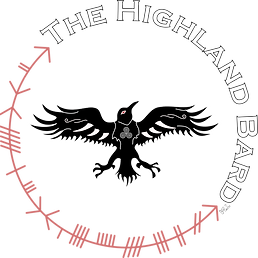For our Celtic ancestors, spirituality was not compartmentalized, but was an expression of a worldview inherently woven into their everyday lives. Even the most routine tasks could be acts of devotion, infused with sacred qualities. Many of these practices had apotropaic functions, intended to increase blessings of good health while simultaneously driving off or warding against baleful influences.

Do you think of wellness, which includes physical, emotional, and mental well being, as part of your spiritual practice? Time and our good health are two of our most precious commodities in life, and they are often overlooked or taken for granted until some catastrophe happens to command our acute attention. What place does your health have within your spirituality? Although they may not have called it as such, in a way our ancestors practiced preventive healthcare which included herbal medicines, magical charms, customs, and devotions, to not only bring them back to wellness when they were sick, but almost more importantly, keep themselves from getting sick in the first place. They understood that our bodies are maps of our lives, there is a spiritual component to wellness, and there really is no separation between the physical and spiritual. Each has a root in the other.
Among the Gaels and other Celtic peoples, healers, or perhaps more apt would be to say doctors and in some cases surgeons, was often a hereditary profession within certain families. In Gaelic Highland Scotland, the Beatons were one of the most famous of these medical families. They wrote and collected many important medical manuscripts, and were attending physicians to royalty and aristocracy across Europe.
Celtic ideas of good health seem to be rooted in ideas of moderation; gluttony was to be avoided and weekly fasting was undertaken on particular days. In the native Irish legal system, the Brehon Laws, a woman could divorce her husband if he grew too corpulent to perform his “husbandly duties” and make children. Warriors in service to a lord were expected to maintain prime fitness; they could be levied a “belt fine” for exceeding a standard belt length.
Food consumption followed seasonal cycles. Meat was consumed more on special occasions and holidays. “Diancecht’s Porridge”, so-named after the physician god of the Tuatha Dé Danann, was taken as a nourishing and restorative dish. It consisted of oatmeal, wood sorrel, chickweed, dandelion, and hazelnuts.

Right activities at the right times invited blessings. But doing things at the wrong time, often if acting tuathal/widdershins (anti-sunwise), was to go against life and nature, risking harm/calamity. The moon was seen to influence field and forest, tides, bloodstream, and the mind. Irish folklore says not to sleep with moonlight on your face or it will influence your dreams, mind, and can cause disturbances or make you crazed. Livestock was slaughtered on a new moon, along with cuttings in general, such as hair, nails, or hooves.
The rhythms of life and health practices followed in accord with natural cycles. Every aspect of life had its proper place, time, and customs that were done in specific ways to increase blessings for oneself, the family, the house, fields, and livestock. Elements of the natural world could be invoked for protection and utilized for practical purpose.
Water cleanses and washes away impurities. Fire provides vital warmth and protects from harm. These two come together in the Teach Alais, the Irish “sweat house”. Steaming was done to promote good health, clear complexion, and recover from illness. These sweathouses were usually constructed of dry stones in a mound or beehive shape. Some were dug into an earthen bank and “finished with sods”, while others were excavated in turf banks. Water was poured over heated stones inside to produce steam vapor; people sat on cut sods or woven mats. In some areas, a sweathouse was shared by every four or five families, where “sweating cures” were taken in Summer and Autumn. After a half an hour or so the participants would emerge and cool themselves in a nearby stream or with a bucket of water.

From Scottish healing tradition comes the following prescription for a daily regimen to promote and maintain good health:
“After rising in the morning, the Gael was advised to stretch his arms and chest, have a good clean spit and rub dust and sweat from the skin. Hair was to be combed, hands and face washed and the teeth cleaned. After a prayer, some good exercise and walking in ‘clear high places’ was to be undertaken before breakfast”. (From The Peat Fire Flame)
Take some time to consider how your spirituality informs your ideal of wellness, and the ways in which taking care of yourself and striving for good health can be acts of devotion and expressions of your spirituality.
In goodwill for your wellness, here is a protective prayer that you can recite before for traveling: “Life be in my speech, sense in what I say, the bloom of cherries on my lips, till I come back again.“ (from the Carmina Gadelica)
Beannachtaí,
~ Erika
